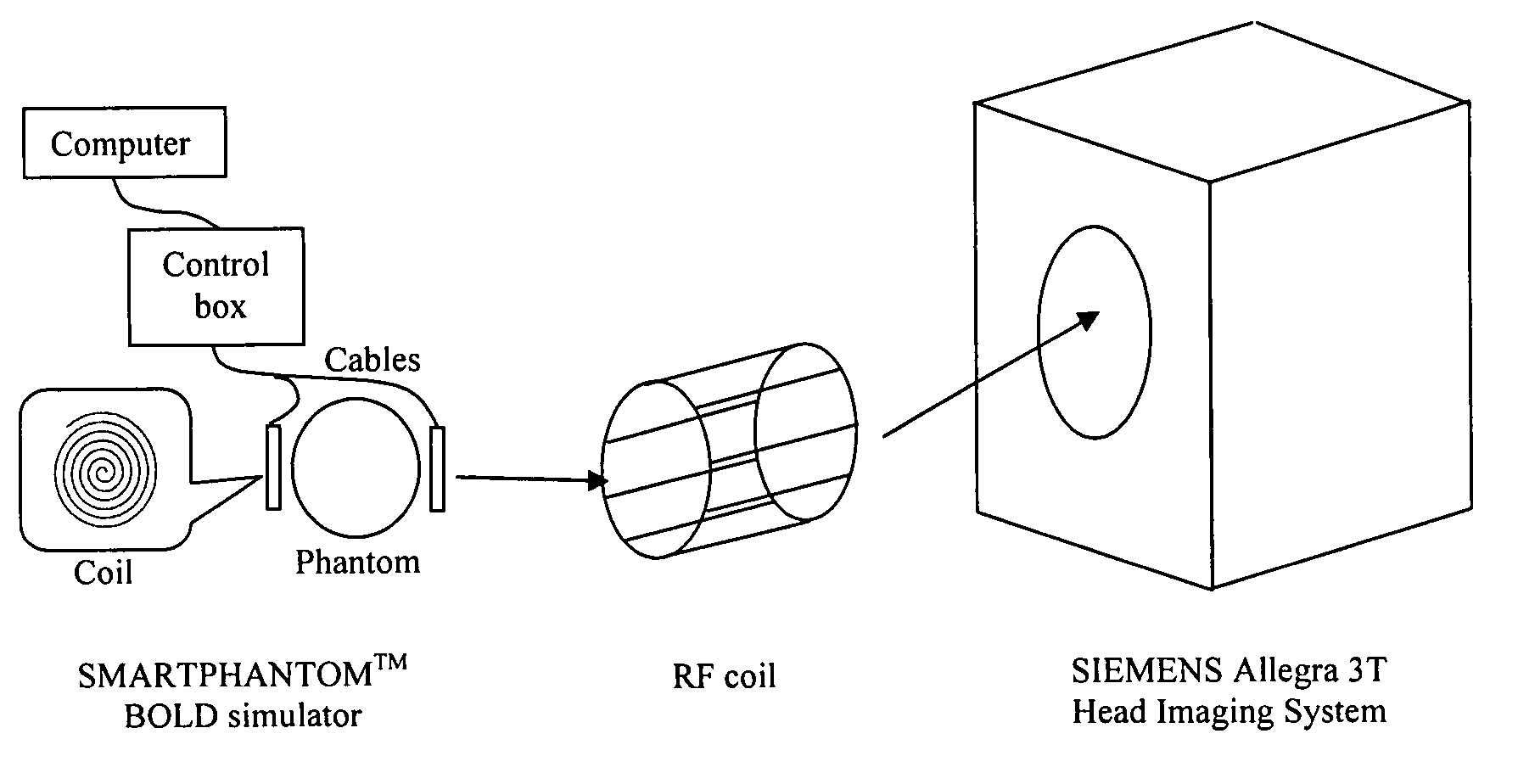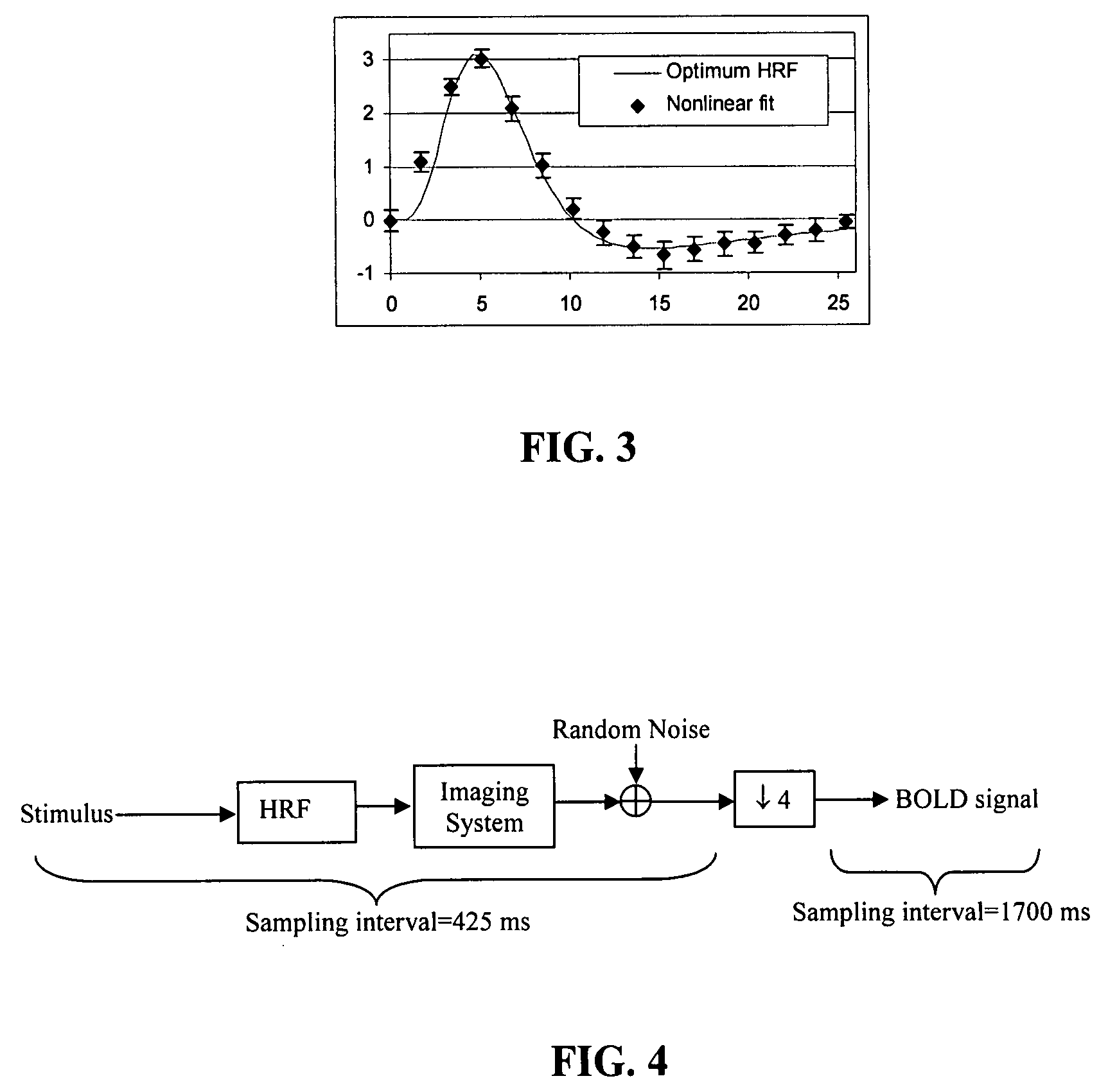Method and apparatus for determining a hemodynamic response function for event-related functional magnetic resonance imaging
a functional magnetic resonance imaging and function-based technology, applied in the field of method and apparatus for determining the function of hemodynamic response for event-related functional magnetic resonance imaging, can solve the problems of data truncation and undersampling, introduce significant noise, and reduce the accuracy of temporal characterization of hemodynamic respons
- Summary
- Abstract
- Description
- Claims
- Application Information
AI Technical Summary
Problems solved by technology
Method used
Image
Examples
example 1
[0037]In a specific embodiment, a BOLD simulator, SMARTPHANTOM™ (Invivo Diagnostic Imaging, Gainesville, Fla. 32608), was constructed and a calibration protocol for ER-fMRI experiments was developed. In phantom scans, the aliasing due to the undersampling in the imaging system can be calibrated. In human scans, a correlation between the aliasing and the noise in the HRF deconvolution for ER-fMRI data was observed. Based on the phantom calibration, an anti-aliasing embodiment in accordance with the subject method can be used to suppress the noise and improve HRF estimation at a low sampling rate. Simulations have been performed to quantitatively evaluate the anti-aliasing method in terms of the accuracy in the temporal characterization of HRF.
[0038]In an embodiment, an aliasing transfer function can be introduced in an HRF deconvolution model to correct the influence of the imaging system on the ER-fMRI data analysis when undersampling is used. This model can be written as
s(t)=f(t){c...
PUM
 Login to View More
Login to View More Abstract
Description
Claims
Application Information
 Login to View More
Login to View More - R&D
- Intellectual Property
- Life Sciences
- Materials
- Tech Scout
- Unparalleled Data Quality
- Higher Quality Content
- 60% Fewer Hallucinations
Browse by: Latest US Patents, China's latest patents, Technical Efficacy Thesaurus, Application Domain, Technology Topic, Popular Technical Reports.
© 2025 PatSnap. All rights reserved.Legal|Privacy policy|Modern Slavery Act Transparency Statement|Sitemap|About US| Contact US: help@patsnap.com



